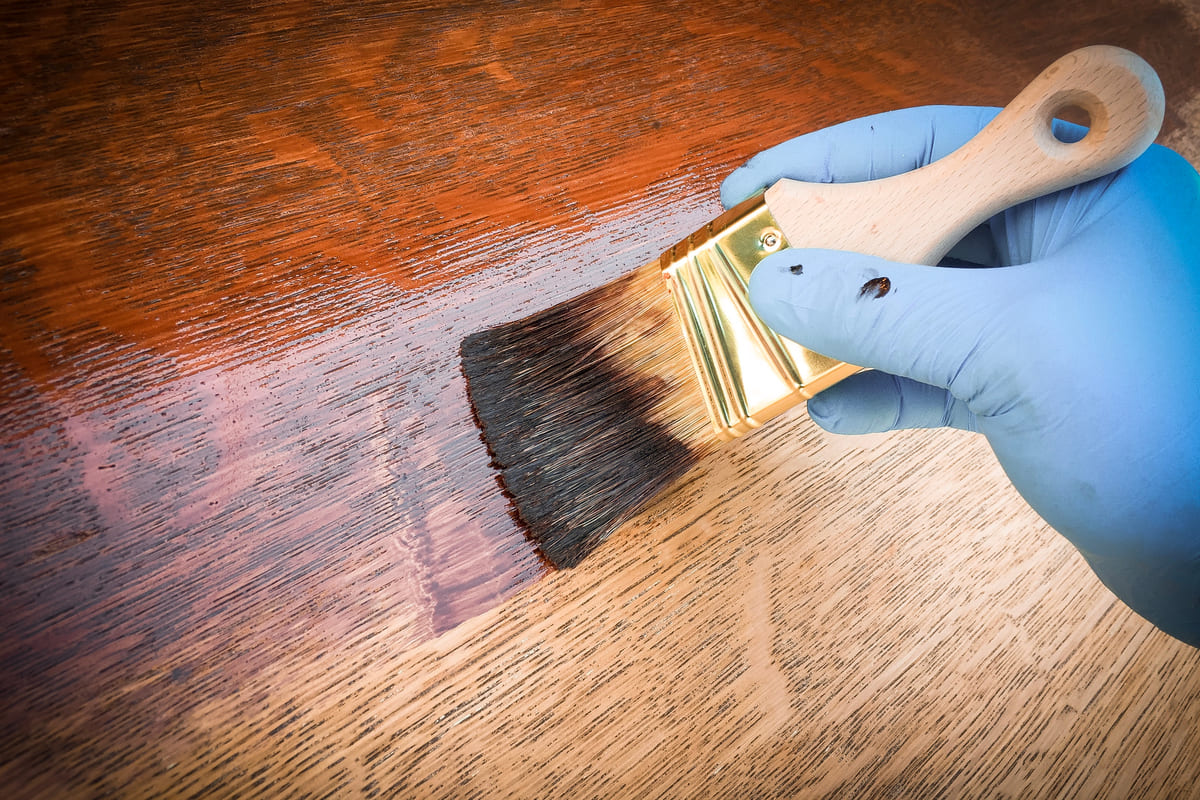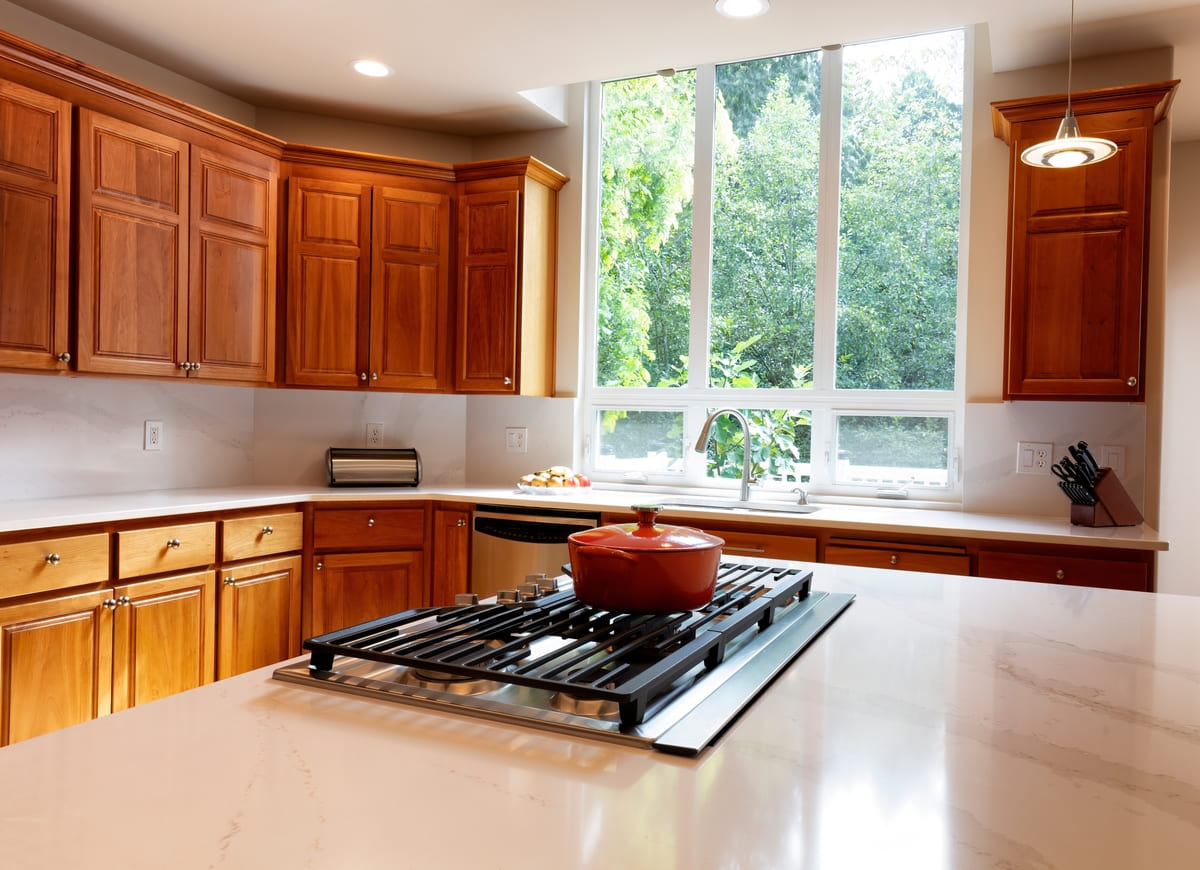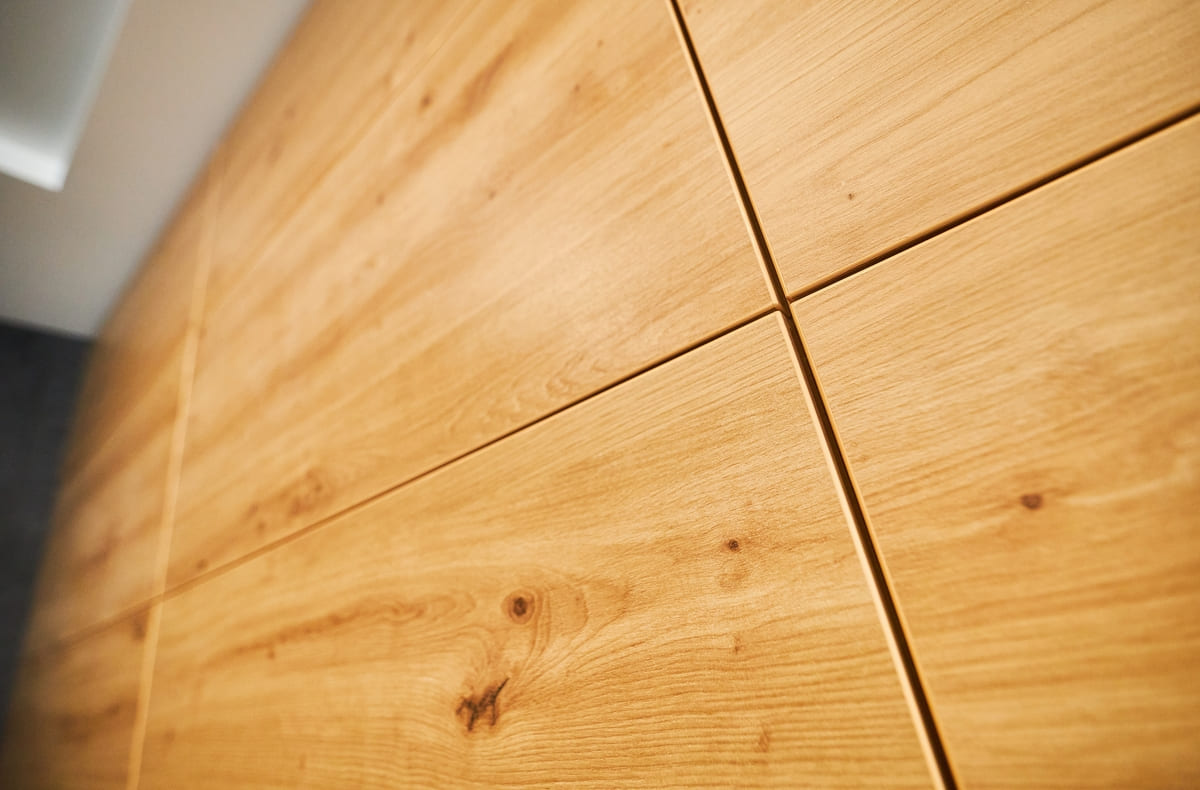Don’t Replace Your Cabinets!
Instead of replacing your cabinets, consider the transformative power of refinishing. Cabinet refinishing breathes new life into your existing cabinetry, restoring its original beauty and enhancing the natural wood grain. It’s a cost-effective and environmentally friendly way to revitalize your kitchen or bathroom, allowing you to customize the finish while preserving the character of the wood. Let’s dive into the art and benefits of cabinet refinishing.
Understanding Cabinet Refinishing and Its Advantages
What Cabinet Refinishing Entails
Cabinet refinishing involves removing the existing finish, repairing any damage, and applying a new stain or clear coat to restore the wood’s natural beauty. Unlike painting, which covers the wood’s grain, refinishing highlights its inherent character.
The Refinishing Process Explained
The process typically includes disassembling cabinets and doors, thorough cleaning and degreasing, sanding to remove the old finish and smooth the surface, applying stain or a clear finish, sealing the wood for protection, and reassembling and reinstalling the cabinets. Meticulous preparation is crucial for a flawless finish.
Key Benefits of Refinishing
Refinishing offers several advantages, including cost-effectiveness compared to cabinet replacement, preservation of the wood’s natural beauty and character, environmental friendliness by reducing waste, and the ability to customize the finish while maintaining the original wood.

Restoring and Enhancing Natural Wood Grain
Unveiling the Wood’s Hidden Beauty
Refinishing brings out the hidden beauty of wood grain, showcasing its unique patterns and textures. Different techniques can further enhance these patterns.
Techniques to Highlight Wood Grain
Specific sanding techniques can highlight the grain’s natural flow, while staining and glazing add depth and dimension, accentuating the grain. Wood conditioners ensure even stain absorption, preventing blotchiness and enhancing the grain’s appearance.
Repairing Wood Imperfections
Refinishing allows for the repair of scratches, dents, and other surface damage. Old finishes and stains can be removed, and faded or discolored wood can be restored to its original vibrancy.
Refinishing vs. Painting: Key Differences and Considerations
The Fundamental Differences
Refinishing focuses on restoring and enhancing the wood’s natural appearance, while painting covers the wood with a solid color, concealing the grain.
When to Choose Each Method
Refinishing is ideal for showcasing beautiful wood grain, restoring older cabinets, and maintaining a natural aesthetic. Painting is suitable for changing the color scheme, covering damaged wood, or achieving a modern, uniform look.
Impact on Wood Characteristics
Refinishing retains the natural texture and feel of the wood, whereas painting creates a smooth, uniform surface that conceals the wood’s texture.
Longevity and Maintenance
Refinishing requires proper sealing to protect the wood from moisture and wear, while painting requires durable paint and a protective topcoat to prevent chipping and peeling.
The Importance of Proper Preparation and Sealing
The Foundation: Thorough Preparation
Thorough preparation is the foundation of a successful finish. Detailed cleaning and degreasing remove dirt and grime, ensuring proper adhesion of the new finish. Proper sanding creates a smooth, even surface. Any necessary repairs should be addressed before refinishing.
Selecting the Right Sealers and Finishes
Different sealers, such as polyurethane, lacquer, and varnish, offer varying levels of protection and durability. The choice of finish, whether matte, satin, or gloss, depends on the desired aesthetic and the room’s function. UV protection is also a key factor.
The Sealing Process: Protecting Your Investment
Applying multiple thin coats of sealer ensures optimal protection. Sanding between coats creates a smooth, even finish. Allowing adequate drying time is crucial for a durable seal.
Professional vs. DIY Sealing
Professional application ensures even coverage and optimal protection, minimizing the risk of damage. Improper sealing can lead to moisture damage, peeling, and other issues.

Conclusion
Cabinet refinishing is a transformative process that can breathe new life into your kitchen or bathroom. By understanding the process, considering the differences between refinishing and painting, and emphasizing proper preparation and sealing, you can achieve stunning results. Whether you choose to DIY or hire a professional, refinishing is a worthwhile investment that enhances the beauty and longevity of your cabinets.
Frequently Asked Questions About Cabinet Refinishing
How long does cabinet refinishing typically take?
The timeframe can vary depending on the size of your kitchen or bathroom, the complexity of the job, and the drying time required for stains and sealers. Generally, it can take anywhere from a few days to a week or more.
Is cabinet refinishing messy?
While refinishing does involve sanding and staining, professional refinishers take precautions to minimize dust and mess. They typically use dust collection systems and protective coverings to keep your space clean.
Can any type of cabinet be refinished?
Most wood cabinets can be refinished, but the success depends on the wood type and condition. Solid wood cabinets are ideal. Laminate or thermofoil cabinets may not be suitable for traditional refinishing methods.
Will refinishing change the color of my cabinets?
Yes, refinishing allows you to change the color of your cabinets by using different stains or clear finishes. You can choose a lighter or darker shade, or even add a subtle tint to enhance the wood’s natural tones.
How often should cabinets be refinished?
The frequency depends on the wear and tear your cabinets experience. Typically, a well-done refinishing job can last for many years. Regular cleaning and maintenance can extend the lifespan of the finish.
Is cabinet refinishing a DIY project, or should I hire a professional?
While DIY refinishing is possible, it requires skill, patience, and the right tools. Professionals have the expertise to achieve a flawless finish and can handle complex repairs or color matching. If you want guaranteed results, hiring a professional is recommended.
Does refinishing add value to my home?
Yes, refinishing can significantly enhance the appearance of your kitchen or bathroom, which can increase your home’s value. Updated cabinets can make a space look more modern and well-maintained.

